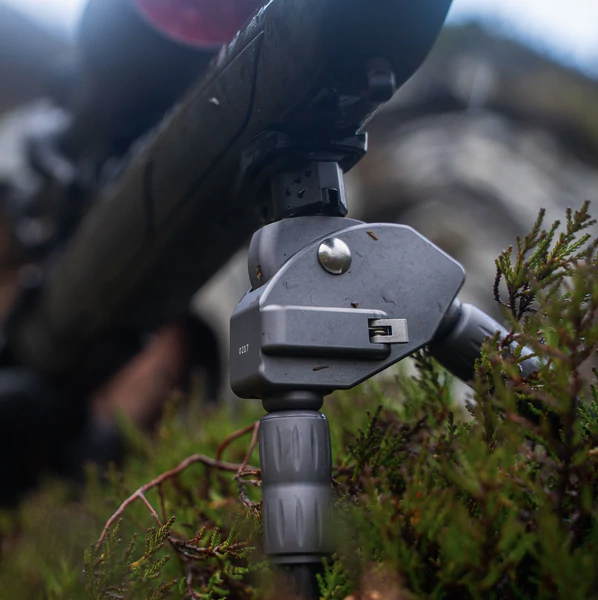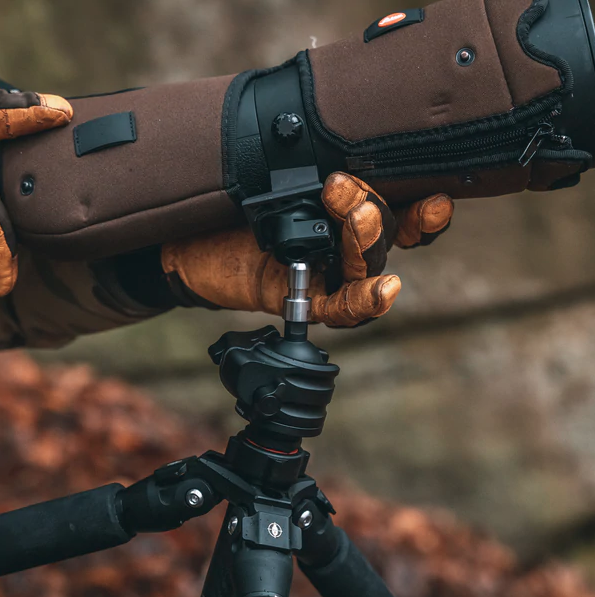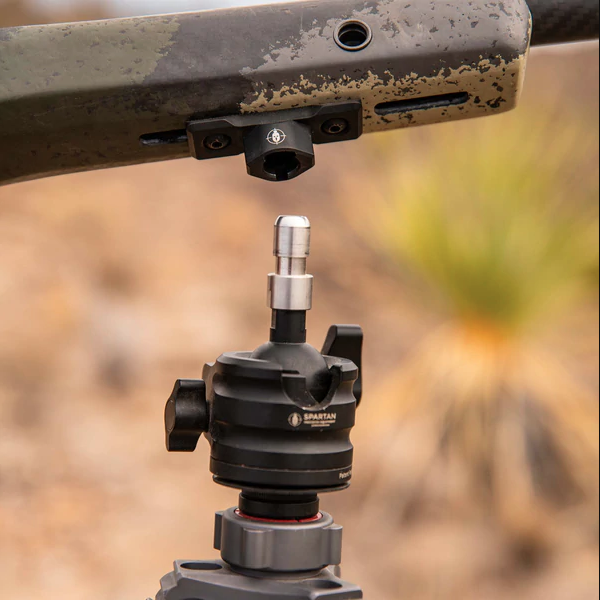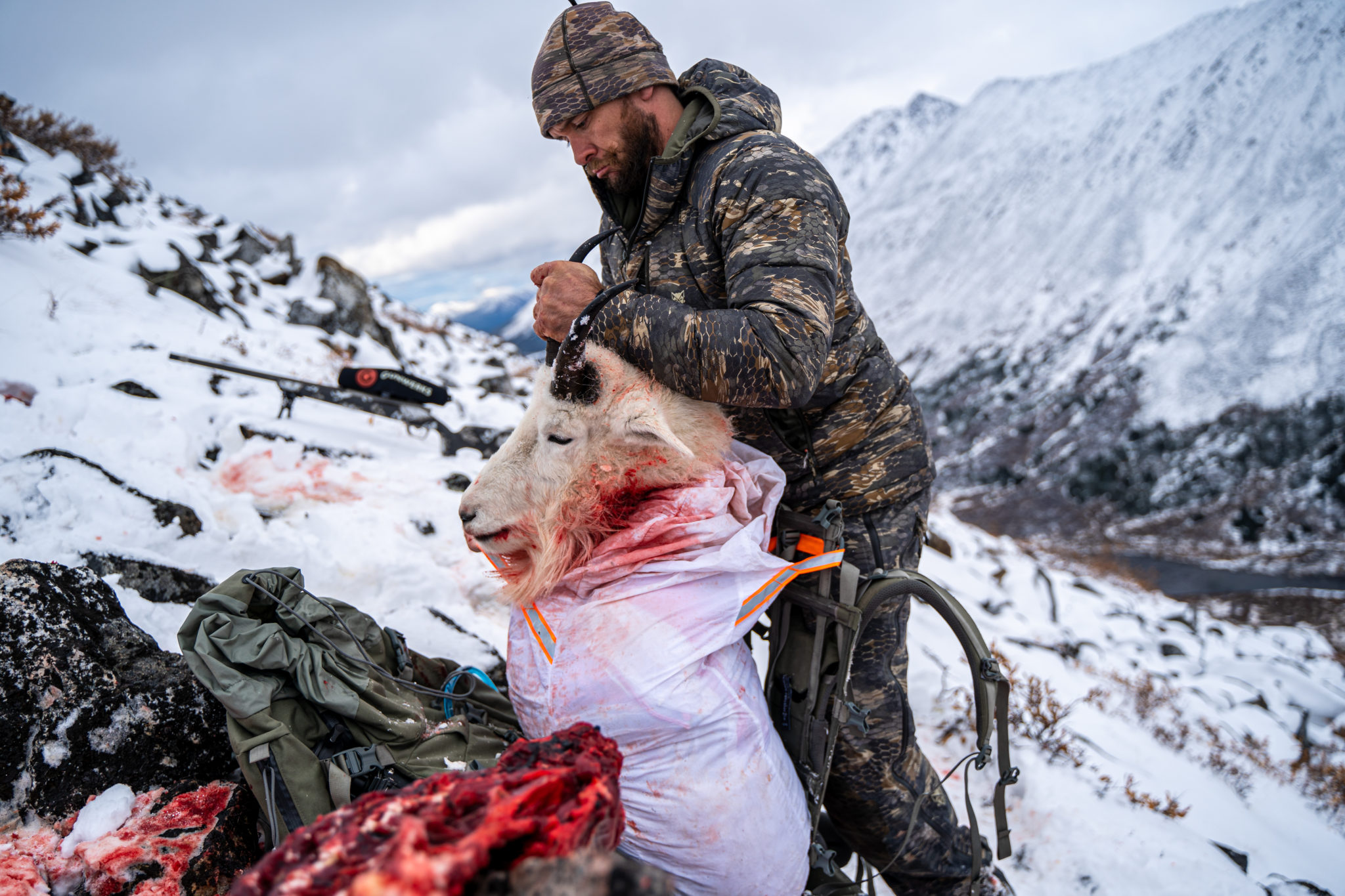One piece of advice often comes up from serious mountain hunters – don’t cheap out on glass. It’s better to “buy once, cry once,” as I have heard Nolan from JOMH say, than to “buy three times, cry three times,” as many have realized. What I seldom hear talked about or mentioned is the importance of what holds that glass in place or helps your lead flinger get set up and stabilized. The easier and more comfortable settling in behind the glass or gun becomes, the better prepared you are to place the shot on that once-in-a-lifetime ram.
Suppose you spend your load on the glass but have a tripod made of popsicle sticks. What good is that in heavy wind or after a couple of impacts when strapped to your pack?
Last year we connected with Spartan Precision to put the Javelin Pro Hunt Bipod and Ascent Tripod to the test through a proper set of hunts in Northern BC, from the August 1st sheep opener to a pocket full of tags late September fly-in hunt.
Communication with Spartan was outstanding; shipping was quick, packaging was well designed, and great for storage when not in use. The little things like that make the difference when you are paying a premium price for a tripod, and it’s clear that Spartan understands this.
The Javelin Pro-Hunt was an easy choice to attach to my relatively stock Tikka T3x, it comes with a bunch of adapters and thread patterns that will work with any rifle, and if you need a Picatinny adapter, they have that option as well. Once the adapter was in place, the magnetic system seamlessly slipped together. I proceeded to shake the shit out of my gun, trying to dislodge the bipod from the adapter. It was perfectly in place and ready to rock. The total “installation” time was about three minutes. For all the weight weenies out there (myself included), this thing is light enough that I have no idea it is attached to my rifle… 176 grams if you need the number.
Like the Javelin Pro-Hunt bipod, the Ascent tripod was much of the same story. It was quick and straightforward to pull out of the box, unlatch the legs and set up on my floor. Next came the Davros head/Davros Pro head. Full disclosure — I have a Meopta spotter that could double as a boat anchor, so this would put any tripod/head attachment to the test. With this spotter, the Davros head was not up to the task. Given its weight, there was no way to smoothly pan the spotter head as if glassing a hillside without tons of wobble and most likely losing your place when it mattered most. I was prepared for this and unscrewed the Davros and screwed on the Davros pro head. Immediately, we were in business.
With multiple vertical and horizontal adjustment options, it handled my boat anchor of a spotter with ease. Next was time to test out a feature that had me skeptical about the Ascent tripod, the legs doubling as walking sticks. Quick to unscrew, lengthen, retract, and easy to reattach to the tripod unit for glassing.
With all the pieces in place, it was time to head into the field to check zero and get comfortable with the Davros head. First up was checking the zero from 100 on my 300wsm. Three quick shots within a couple of inches using some sandbags and laying prone told me we were good. I then subbed the sandbags for the Prohunt bipod, and three more quick shots within a couple of inches told me we were still good. I then practiced some efficient bipod work of multiple setups (legs short, legs extended, shooting off an angle) out to 246 yards, and I was impressed with how comfortable it became after a short time in the field.
The Ascent tripod got a good bit of field practice with a 500m elevation straight-up push to the top of Goode’s Basin with two people using a tripod leg or trekking pole each. They felt solid and were super lightweight, better than my black diamond trekking poles. The initial glassing setup was a breeze. At this point, I started to notice how many things were threaded on the Ascent tripod because they all came unthreaded. Now that being said, the Davros pro head and the legs of the tripod didn’t come unthreaded once. So I went home, put some blue Loctite on every thread I needed, and was reminded of why we practice with our gear before going into the field.
In The Field
My 70lb Mystery Ranch Marshall was strapped to my back, and my Ascent tripod legs/trekking poles were wading me across a thigh-deep river on the first of 10 days of a sheep hunt. Over the next two days, we climbed a couple of thousand meters in 30+ degree celsius heat, and I leaned on those poles very hard. They were solid as a rock. Nearing the end of the hunt, my hunting partner bent one of his trekking poles beyond repair, and in the blink of an eye, the third leg of the tripod was in use. Pretty frickin handy when you’re pounding down steep rocks, and your legs are giving out.
Using the tripod as the stable surface for my spotting scope was outstanding. The ascent tripod was sturdy in the wind looking 2-3km away at rams. The Davros pro head was easy to manipulate for steady panning and grid searching ram country.
The bipod got no shooting use that trip, although it was a quick connect to have my gun set up each time we stopped and rested it on the ground.
Fast forward to mid-September in Northern BC. On the side of a lake near zero degrees celsius, bundled in layers, spotting scope out scouring the hills for moose, caribou, goats, and sheep. As everyone knows, the more you use your gear, the more you get comfortable with it, and at this point, I was about 150 hours on the Davros pro head with my spotter, and it was cake.
The transitions were seamless, from spotting an animal through binos then following up with the tripod out and spotting scope. Multiple guys rotating through the spotter for a look didn’t lose the sight picture once, even when bumped. We glassed and sat so much that trip I might have spent more time through my spotter than binos.
A couple of moose were down a few days into the hunt, and we had a billy goat spotted from camp. Lorne Trousdell and I made the stalk. After four hours of thick spruce and steep unstable boulders covered with snow, we were at the spot we saw the billy from camp and took off on his tracks. I was starting to think this billy would have fed along this face and into a large basin, giving me the perfect opportunity to make a 400 – 500 yard shot with the Ascent tripod.
It’s all I was thinking about visualizing the long shot — perfectly seated behind my rifle with a stable tripod to shoot off. Then I came around a small rocky ridge, and there was an awesome billy 175 yards away from me uphill, feeding on lichen and grass and looking ever so stoic as billy’s do. I pulled up my binos and confirmed it was a billy, and he had no idea we were there. I grabbed my pack to get the tripod unstrapped, and a buckle scraped a rock, catching the billy’s attention.
With no time for the tripod and the bipod down in camp, I laid my mystery ranch pack on a rock, chambered a round, and tried to get the sight picture. The billy takes a couple of quick steps. Lorne makes a generic call it stops, trigger depresses, stay on sight… a good hit. Lorne confirms it was good, but I sent one more because goats are tougher than the rocks they walk on. My billy was down. Maybe the most epic stalk I will ever have with one of my best friends and two more great friends watching from base camp through the spotters.
The hike down was short but no cakewalk, with unstable boulders covered in snow, 60-70lbs in the pack, and ten days into the trip with no shortage of hiking. Again the ascent tripod legs took a shit-kicking by supporting me in a semi-controlled descent off a mountain, getting stuck under boulders, wedged in cracks, and slammed on like Gandalf’s walking stick in Lord of the Rings.
They performed beautifully.
The overall impression is the Javelin Pro Hunt bipod is a no-brainer for anyone looking for a light, stable field bipod. Its only drawback is the legs don’t fold, and for the love of God, buy the holster Spartan makes for it. It’s lightweight, stable, has excellent clearance for shooting from prone without putting you in an uncomfortable position, and the price point is entirely acceptable.
I would love to say the Ascent tripod is a no-brainer, but I have plenty of friends with other tripods who are successful sheep guides and hunters and will put more time on their tripod and spotter set up in a season than I will in 5 years. It’s a sturdy tripod that is light, and functional across a handful of uses. I had dozens of people ask me what I thought of it as a trekking pole/tripod setup, and my answer was the same thing — it’s bombproof. I would have loved to use the unique magnetic connection to switch effortlessly between my spotter and rifle for a crack at an animal, but the conditions didn’t allow it this year. Target shooting was super fun to sling brass from a bipod to a tripod in many different positions. Ultimately I think the Ascent tripod is something I will have for the rest of my days, and I am enjoying the whole system.







